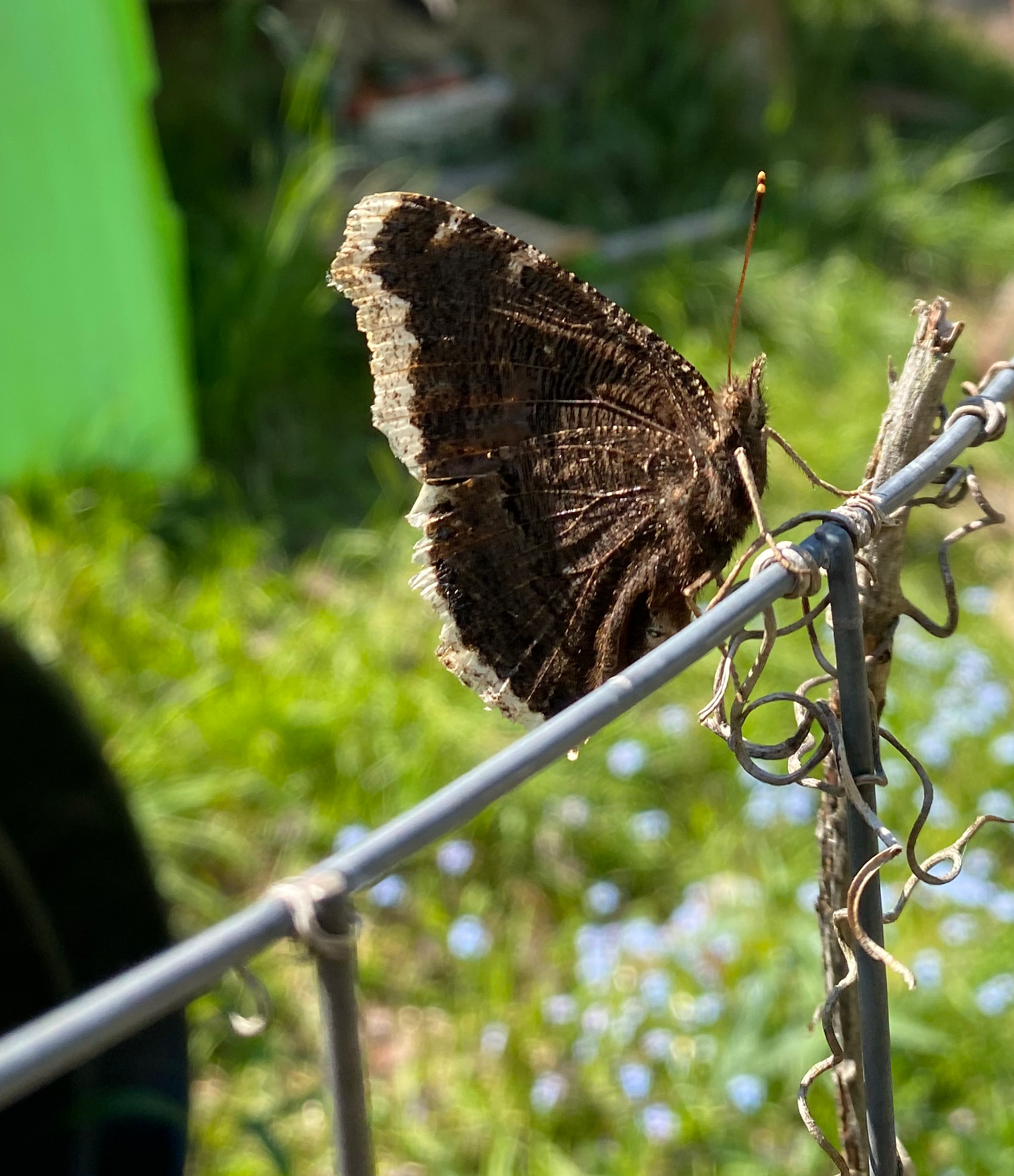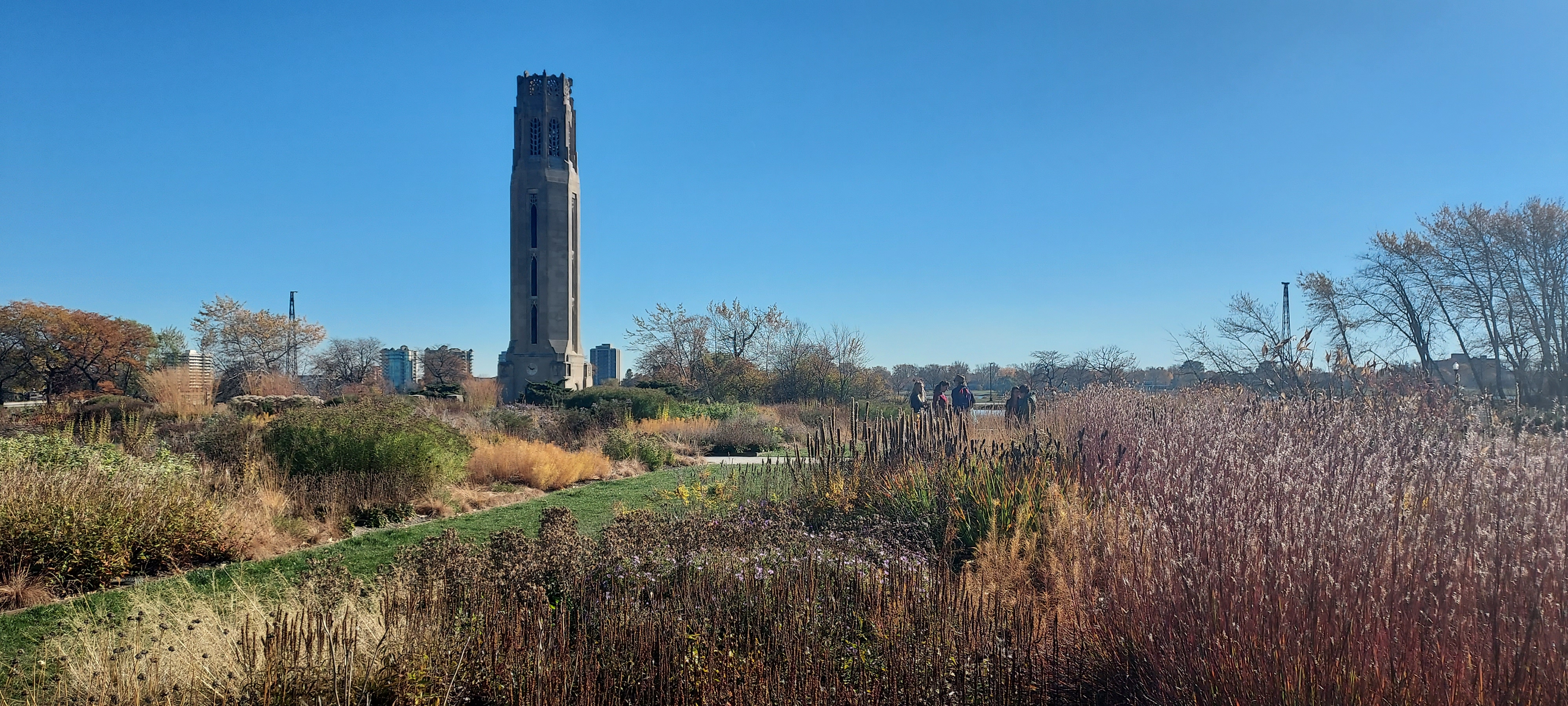Fall yard and garden cleanup tips
Use these fall yard and garden cleanup tips for more success next year.

As leaves change color and the weather turns cooler, many gardeners breathe a sigh of relief that the end of the gardening season is upon them. However, investing a little more time in the garden right now can help plants survive Michigan’s cold winter temperatures and have a promising start during next year’s garden season. Michigan State University Extension’s Gardening in Michigan website provides many resources for gardeners. Here are several suggestions for fall cleanup.
General garden tips
- Before you begin fall cleanup, evaluate your garden and take notes to help plan for next year. A smartphone, notes app and camera are tools at your fingertips that make it easy to keep records. Note which plants did especially well and which ones you don’t want to grow again. Note favorite varieties for flavor, disease resistance and performance. Take pictures of the nursery tags of your favorite plants or plant combinations that you would like to recreate. Note location of insects, diseases and weed problems to get a jump on them for next year.
- Be considerate of overwintering pollinators. Bumble bees, butterflies and other wild pollinators might be sheltering under leaves or attached to woody plant debris in your yard and garden. Keep an eye out for these insects during fall cleanup and consider leaving some habitats undisturbed until spring when they emerge naturally.
- If you haven’t brought in your houseplants, do so now. Check stems, the undersides of leaves and the outsides of pots for insects and other pests that may thrive inside. Wash off any pests with a hose or treat for pests before bringing pots inside. If they are joining other plants inside, you may want to quarantine these plants for a couple weeks to ensure that they are not harboring any pests.
- Winterize your fountains and ponds. Smaller fountains should be drained and pumps taken inside for the winter.
- Prevent weeds next year by removing weed plants and seed heads now. Desirable plants like morning glory (Ipomoea sp.) or Cosmos can become a garden nuisance if seeds are allowed to fall into garden beds. Clean up the plants now and put them—and their seeds—in yard bags for city pickup.
- Use fallen leaves as mulch for trees, shrubs and in perennial beds. Leaves can be raked around woody plants and perennials and left until spring. Leaves will act as an insulator and help overwinter less-hardy perennials. They also provide a home to beneficial insects and spiders. Don’t forget to pull back leaves in early spring that are covering spring flowering bulbs or perennials.

Vegetables and fruit
- Clean up all plant debris, rotting fruit or vegetables, and dead plants from the vegetable garden to reduce overwintering pests and diseases.
- Plant garlic before the ground freezes for harvest next summer. Depending on your location in Michigan, best planting is in October.
- Prepare the soil for next year’s garden by removing weeds and adding organic matter such as compost or well composted manure.
- Sow cover crops like winter rye.
- Use row covers on to extend the season for cole crops and other hardier leaf vegetables. Some kale varieties can overwinter and provide delicious, edible kale flowers in the spring.
- Remove and dispose of fallen apples that may harbor apple maggot or codling moth larvae.
Flowers
- Pull annuals flowers from pots and flower beds and compost. If insects or disease were a problem this summer, dispose of plant debris in yard bags (do not home compost).
- Leave ornamental grass and perennial stems to provide homes for overwintering bees and other beneficial insects.
- Carefully lift and store tender perennials such as cannas, dahlias and gladiolus. These plants have fleshy storage organs (rhizomes, tubers, corms) that cannot withstand the deep freezes if left in the ground over winter. Tender perennials should be stored dormant in a cool, dark place (ideally 45-55 degrees Fahrenheit).
- Plant spring-flowering bulbs like tulips, daffodils, crocus, hyacinth and snowdrops. If you have problems with squirrels digging up bulbs, try covering newly planted bulbs with hardware cloth or chicken wire. If voles eat your bulbs, try daffodils or allium, or plant in cages made from hardware cloth.
- Incorporate compost into the soil as dividing and renovation activities go on.
- Store inside any pots that can't take a freeze, such as terra cotta, ceramic and many plastic pots.

Lawns
- Mulch leaves into your lawn. Mulching leaves recycles nutrients and adds organic matter to turf. Make sure your mower has a sharp blade to ensure the leaves will be chopped up well. Set your mower height as high as it will go and mow at your normal speed. Try to mow the leaves when they are moist from the morning dew, but don’t mow them when they’re wet. Don’t let the leaves pile up greater than 3 to 4 inches deep before mowing.
- Once your lawn stops growing, lower the mowing height for your final mowing. This will help clean up the lawn, prevents grass from being too tall going into the winter and reduces problems with voles and snow mold. Michigan State University Extension turfgrass specialists recommend lowering the mowing height no more than one notch on your mower (typically half an inch).
- Blow out or winterize your irrigation system before a hard freeze.
Trees and shrubs
- Move trees and shrubs after fall leaf drop but before the ground freezes. Fall planting should take place soon after leaf drop, providing time for new roots to develop before the soil freezes.
- Water newly planted trees and shrubs and evergreens (boxwood, Rhododendron species, conifers).
- Protect trees and shrubs from mammal damage. Fall is the time deer rub their antlers on trees of all sizes. Protect trees from rubbing and foraging by caging them with livestock fencing. Chicken wire cages can be placed around smaller shrubs, like roses, to prevent rabbits from chewing the branches during the harshest winter months. Be sure to note total snowfall levels and height of tree/shrub protection as any exposed plant material above snowfall will be accessible to damage.
- Use burlap stretched across frames to prevent windburn on evergreens like boxwood and Rhododendron species. Burlap can also be used to block salt spray from damaging hedges near road and sidewalks.
For additional gardening information, visit www.migarden.msu.edu. For garden related questions, visit Ask Extension.



 Print
Print Email
Email